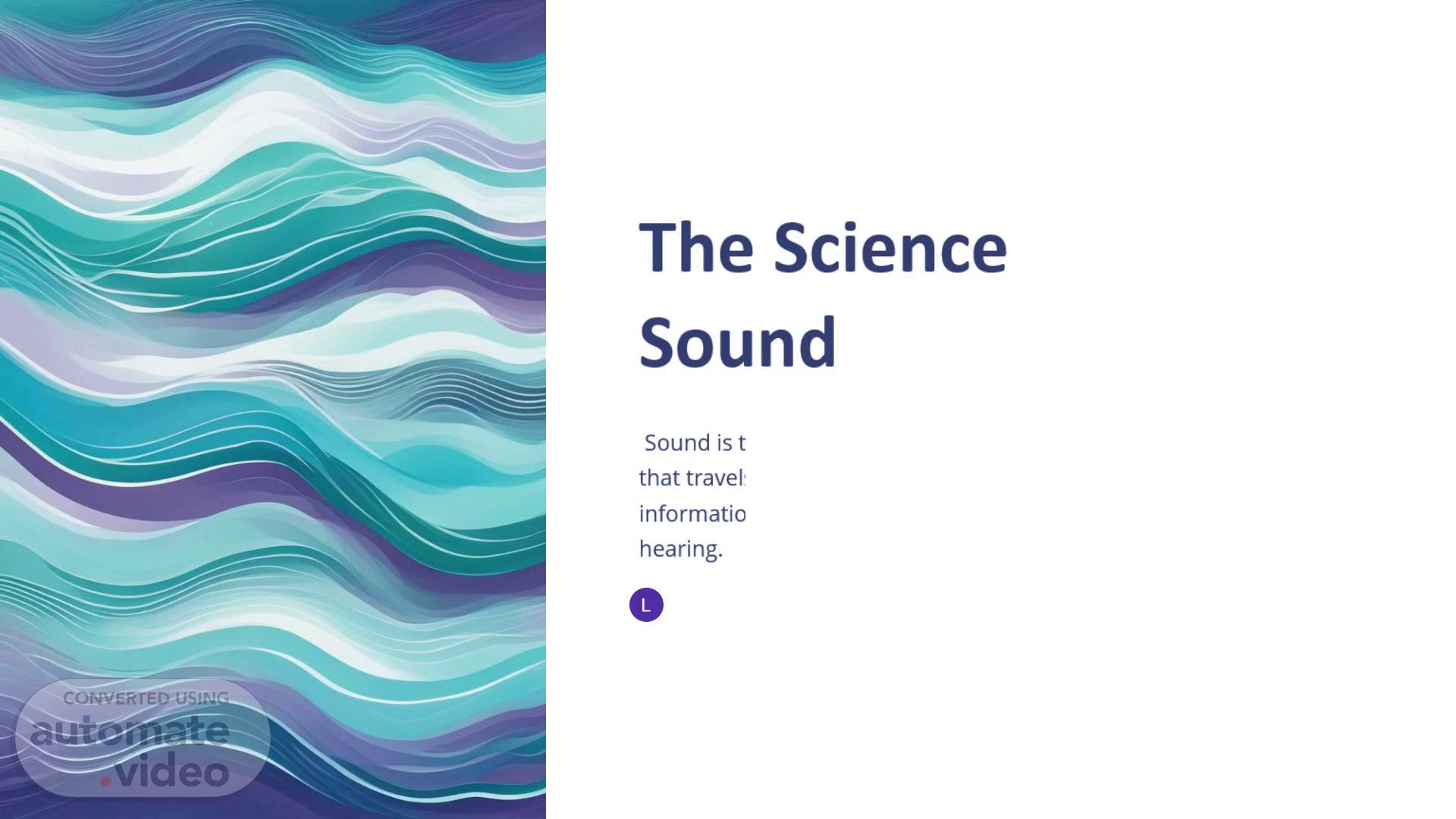
Page 1 (0s)
The Science of Sound. Sound is the vibration of particles in a medium, such as air or water, that travels in the form of waves. These waves carry energy and information, allowing us to perceive the world around us through hearing..
Page 2 (16s)
What is Sound?. Sound is created by the vibration of objects, which causes the surrounding air molecules to vibrate as well. These vibrations create pressure variations that travel through the air as sound waves. The properties of these waves, such as frequency and amplitude, determine the characteristics of the sound we hear..
Page 3 (38s)
Properties of Sound Waves. 1. Wavelength. The distance between two consecutive peaks or troughs of a sound wave..
Page 4 (57s)
Hearing and the Auditory System. The Ear. Sound waves enter the ear and vibrate the eardrum, which in turn transmits the vibrations to the inner ear, where they are converted into electrical signals..
Page 5 (1m 20s)
Types of Sound: Noise, Music, and Speech. 1. Noise.
Page 6 (1m 47s)
Sound Perception and the Brain. Auditory Processing.
Page 7 (2m 17s)
Applications of Sound Technology. Audio Recording.
Page 8 (2m 44s)
The Future of Sound. Immersive Audio. Advances in spatial audio and 3D sound technology will create more immersive and realistic audio experiences for entertainment and communication..